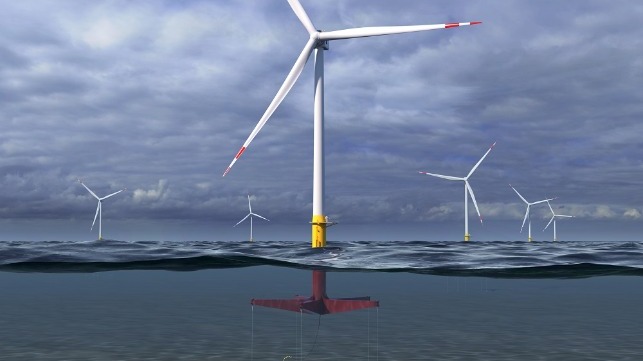White House Announces California Offshore Wind Plans

On Tuesday, the Biden administration announced plans for the first offshore wind lease areas on the U.S. West Coast. The proposed development blocks off the central and northern California coastlines have potential for up to 4.6 GW of power generation, according to the White House.
In collaboration with the Department of Defense - which has strategic interests in offshore development along the California coast - Biden's Interior Department identified a 399-square-mile parcel northwest of Morro Bay for future leasing. The department is also moving ahead with the proposed Humboldt Call Area for wind development off the coast of northern California.
The Defense Department played a key role in identifying these areas for offshore wind, the White House said in a statement, acknowledging the "critical nature of current and future military testing, training, and operations" in the region.
The growing U.S. offshore wind industry is primarily focused on projects on the Eastern Seaboard, where political will and geography favor accelerated development. West Coast offshore wind farms will be more technically challenging to build, but the wind resources have excellent potential.
"The American offshore wind industry applauds this historic step forward on offshore wind development off the U.S. West Coast. California now has an opportunity to become a global leader in floating offshore wind technology with an agreement to move forward with leasing of 3,000 MW in Morro Bay and additional space in the Humboldt Call Area," said Heather Zichal, the CEO of the American Clean Power Association.
"Opening the door to development offshore California will prime the Pacific Coast to be another American offshore wind hub and economic driver and will enhance American wind leadership," said Erik Milito, the president of the National Ocean Industries Association. "Importantly, Wood Mackenzie previously found that one lease sale offshore California could support 38,100 jobs per year, $3.5 billion in annual wages and $44.2 billion in total capital investment."
Floating wind requirements
The waters off the U.S. West Coast are far too deep for traditional bottom-fixed wind towers, which are restricted to about 60 meters of water depth or less. Development of the region's wind resources will require the commercialization of floating offshore wind technology, which is more complex (and at present, more expensive) than bottom-fixed installation.
The Department of Energy, through its Office of Energy Efficiency and Renewable Energy and its ARPA-E program, has invested more than $100 million in floating wind R&D, like GE's $4 million ATLANTIS advanced controls project. GE is working with naval architecture firm Glosten on a tension-leg platform (TLP) floating turbine foundation that could cut the weight of each installation by more than a third, reducing cost and bringing floating wind closer to market.
"Designing a floating turbine is like putting a bus on a tall pole, making it float and then stabilizing it while it interacts with wind and waves. Doing this well is both a design and controls challenge," said GE senior principal engineer Rogier Blom. "We will be concurrently designing the controls system with the design of the floating structure itself to advance floating offshore wind energy . . . With floating turbines, we would be able to dramatically expand the reaches of offshore wind power to areas with water depths of 60 meters or greater.”
